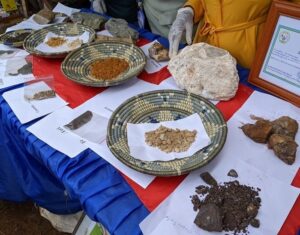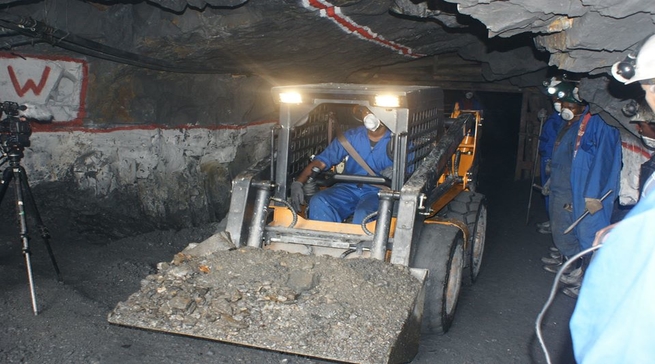Mining as a pathway to prosperity: Gakenke residents leverage mineral extraction for economic growth
Residents of Ruli Sector in Gakenke District view mining as a primary source of income that surpasses other types of work, enabling them to tackle poverty, improve living conditions, and uplift their community.
With over 30 years of experience in mining, Karambizi Yussuf, who works with the COMIKAGI cooperative in Ruli Sector, emphasizes the profound impact of mining on the local economy. He notes, “The infrastructure here, including quality housing and visible community developments, largely stems from income generated through mining activities.
Mining is more profitable than agriculture or other services, making it the preferred choice for many.”

The sector also provides employment to educated youth, including women with university degrees in mining-related fields. Niyigena Francine, a graduate of the University of Rwanda’s School of Science and Technology (formerly KIST), quickly secured a position with the COMIKAGI cooperative after completing her studies.
She states, “Mining employs both skilled professionals and those who couldn’t complete their studies. For example, some workers specialize in building support structures in the mines, while others are tasked with digging, lifting sand, or providing first aid in emergencies. Mining truly sustains us.”
She adds, “With so many engaged in mining here, it feels like an urban center where everyone is involved in business or another income-generating activity.
Many have been able to build homes, pay school fees—even for university, save with Ejo Heza and Mituelle, and participate in informal savings groups.”
While accidents have historically been a concern in the mines, experienced miners say safety measures have greatly improved, reducing the number of incidents.
Mukamurenzi Jeannette, a mining engineer with M&M Gakenke Mining Ltd., oversees safety protocols in 40 local mines, explaining, “Every mine must have reinforced sides with wooden planks, designed at a two-meter height and a 1.8-meter width to safely accommodate two wheelbarrows and allow workers to move inside as if in a room. This structure reveals signs of risk early on, allowing for timely repairs.”
She continues, “These safety practices have made a significant difference. Previously, a single mine could see up to five accidents per month. Now, we sometimes go five months or more without an incident.”
The mines in Ruli Sector yield minerals such as coltan, cassiterite, lithium, and wolfram, attracting six mining companies and one cooperative. Jean Bosco Hakizimana, Executive Secretary of Ruli Sector, reports that around 7,000 of the area’s 30,000 residents, primarily youth, are engaged in mining, with many earning between 3,000 and 5,000 Rwandan francs daily.
According to the Rwanda Mines, Petroleum, and Gas Board (RMB), mining is Rwanda’s second-highest revenue-generating industry after tourism. Over the past three years (2021–2023), mining has brought in more than $500 million annually.

